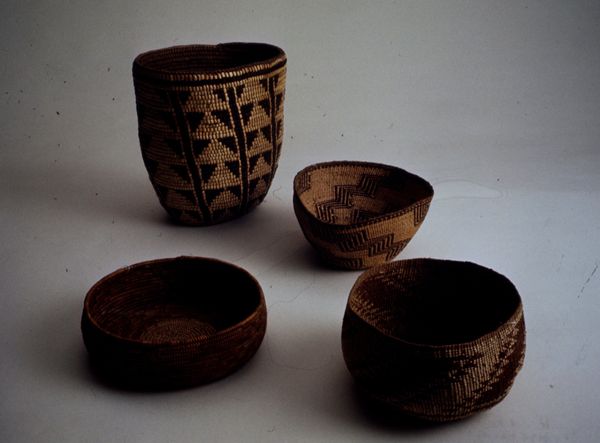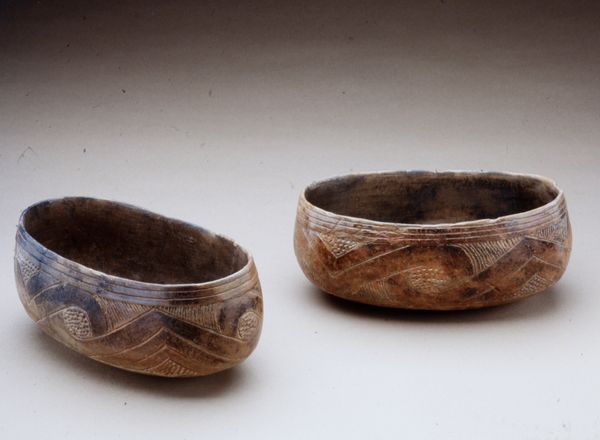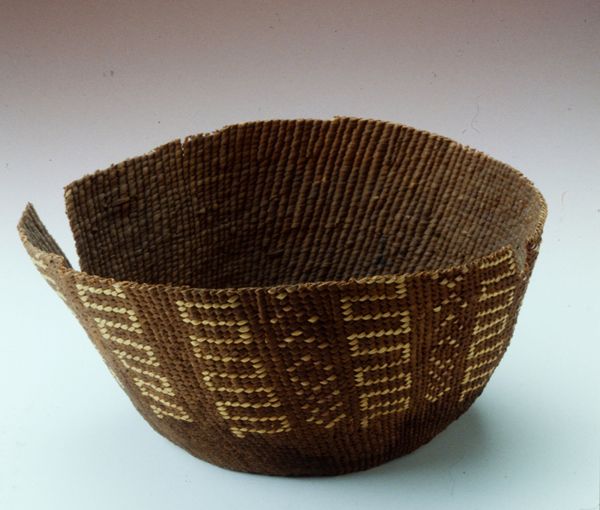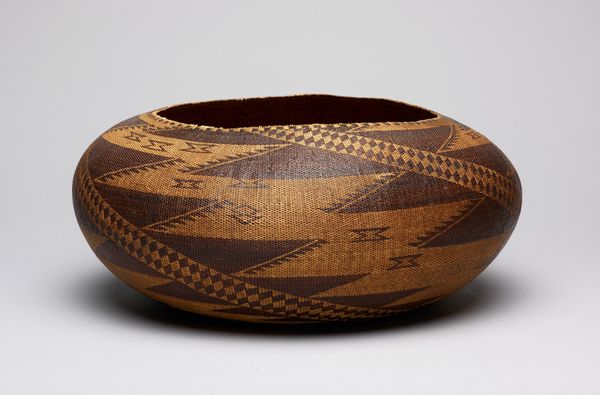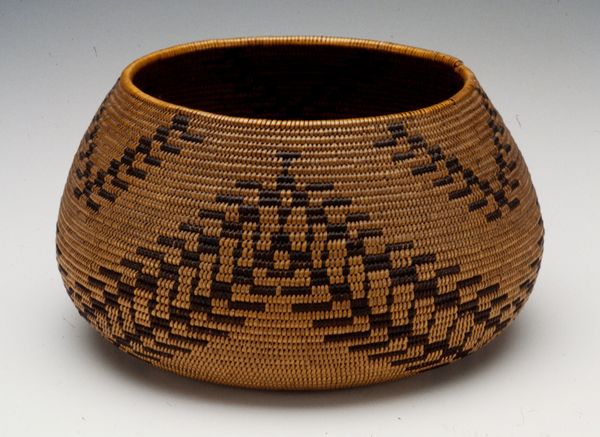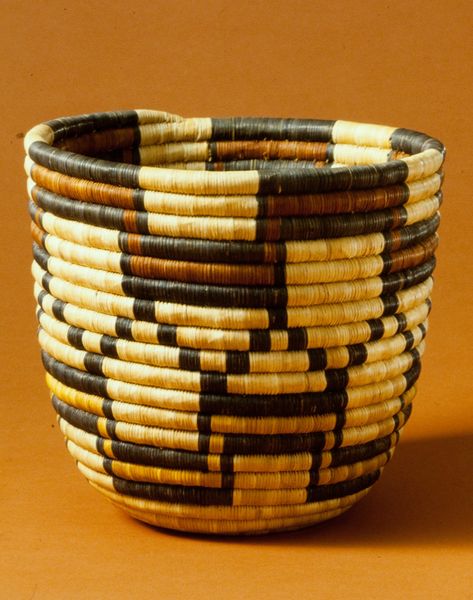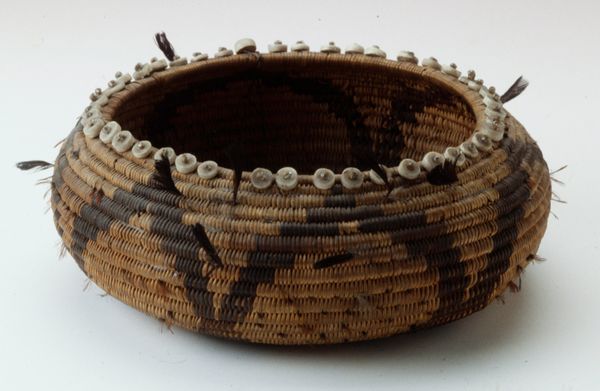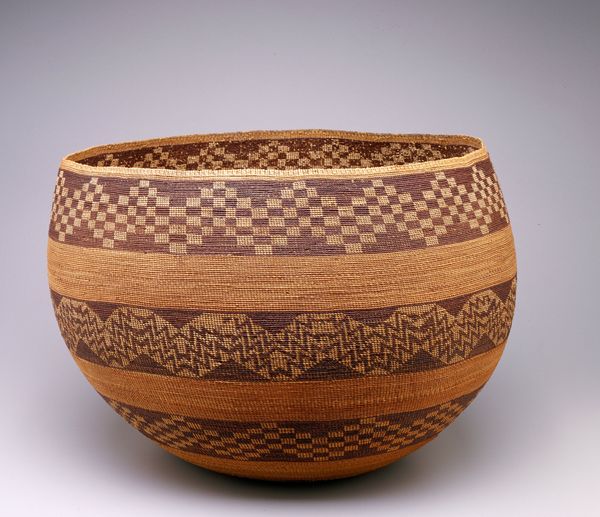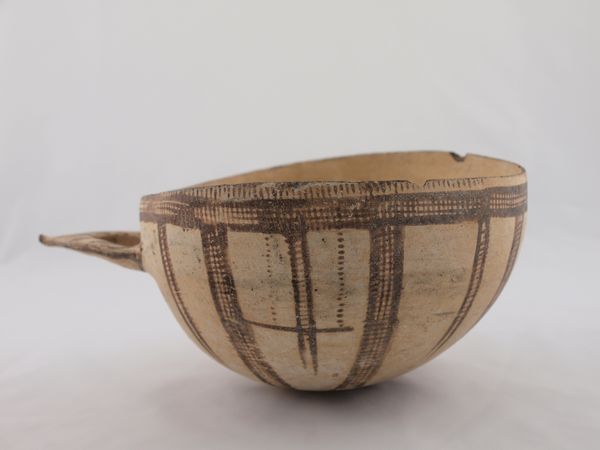
fibre-art, weaving, textile
#
fibre-art
#
weaving
#
textile
#
geometric
#
ceramic
#
indigenous-americas
Dimensions: 12 1/2 x 12 1/2 in. (31.8 x 31.8 cm)
Copyright: Public Domain
Editor: So, we're looking at a set of three baskets, created by an Indé (Apache) artist, sometime around the 20th century. They're made from fibre, woven with striking geometric designs and figurative representations. What really stands out to me is the texture – you can almost feel the individual strands of material. How would you interpret these works? Curator: Well, let’s start by considering the labour involved. Think about the meticulous gathering and preparation of the fibres – perhaps willow, yucca, or devil's claw. Each plant has unique properties that affect the basket’s final form and function. What does the presence of these different motifs say about the social value that's placed on these works of art? Editor: That’s a great point. I hadn’t thought about the specific materials. It's not just one generic "fibre," but carefully selected plants each playing their own part in the baskets' form. It seems crucial for their structure, and even cultural identity... Does the sourcing impact how it was sold, or exchanged? Curator: Absolutely. These baskets weren’t just art objects in the Western sense. They likely functioned as containers for food, water, or tools. How might the exchange of these baskets have reinforced social bonds, or perhaps been influenced by economic pressures like the tourist trade, in the 20th century? Did they reflect a continuation of older crafting practices or do you see changes reflecting shifts in the artists' environment or economic realities? Editor: It makes me consider the practical elements of these pieces, while also appreciating the intricacy of their manufacture and social history. The narratives they represent can easily be lost in the ‘art’ of them, but their usefulness can provide context. Curator: Exactly. So, by focusing on the materials and processes, we move beyond a purely aesthetic appreciation and engage with the social and economic realities that shaped these remarkable objects. How different do you see basketry after today's reflection? Editor: Considerably. I understand them more now as an embodiment of culture, labor, and resourcefulness, instead of simply admiring their visual appeal. Curator: Excellent! Now you are looking closer at the historical narrative of each coil.
Comments
No comments
Be the first to comment and join the conversation on the ultimate creative platform.
